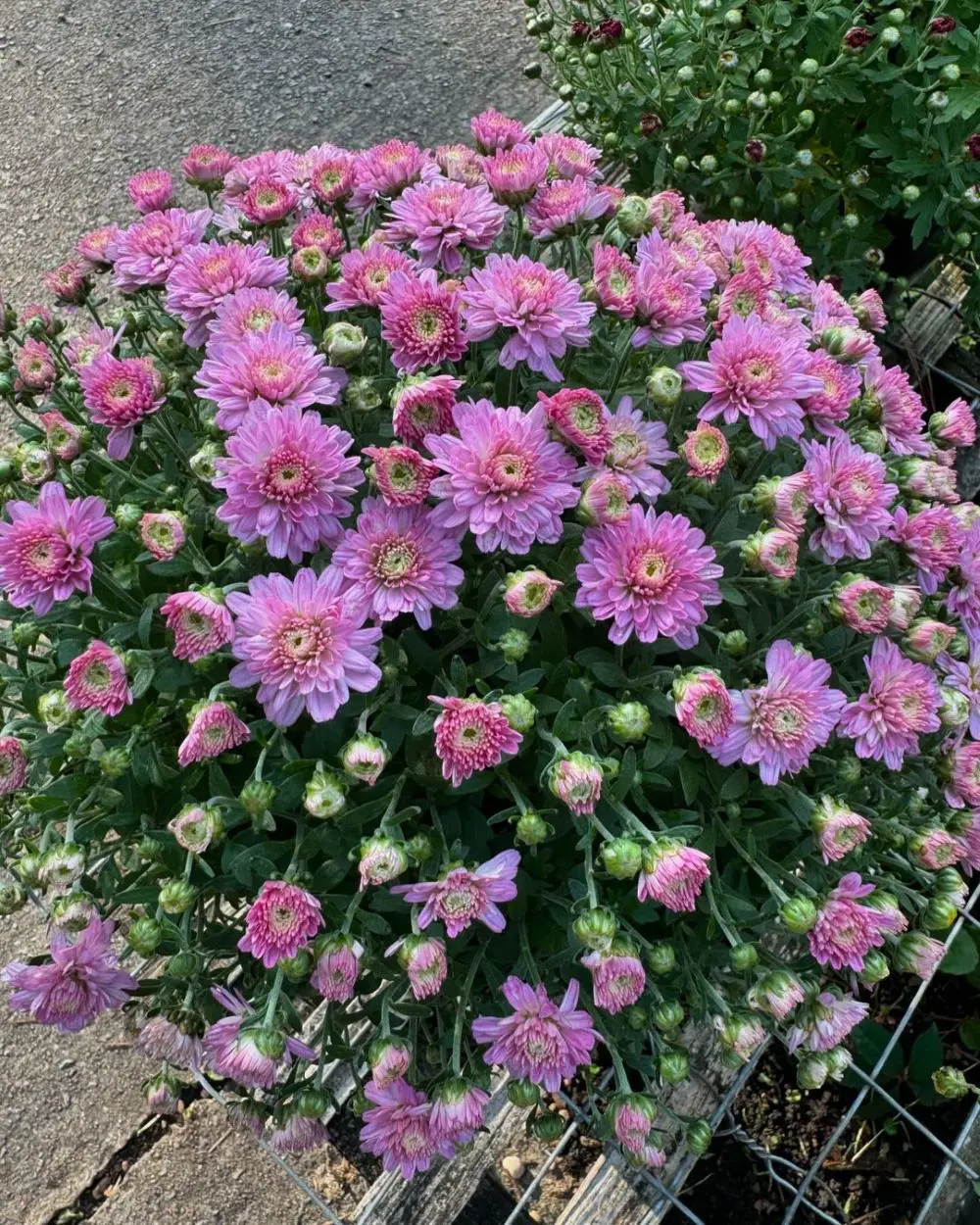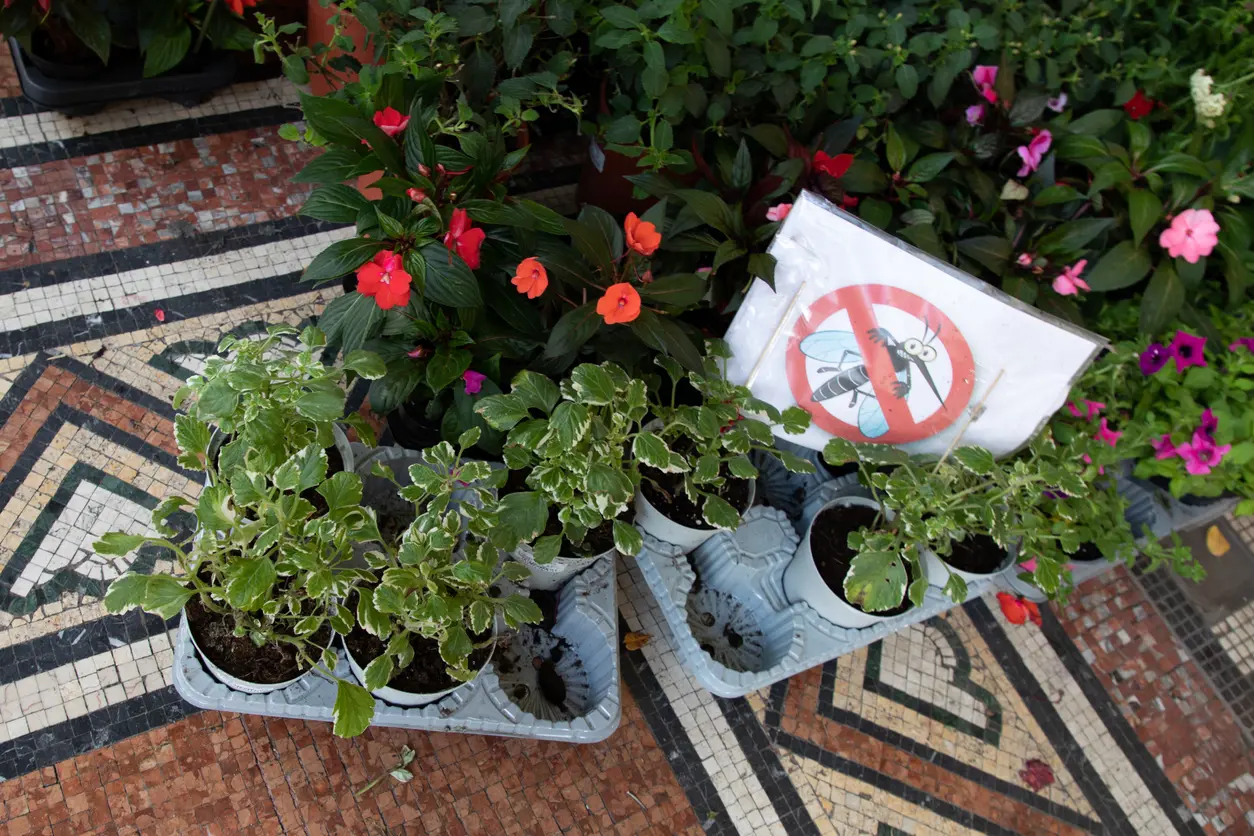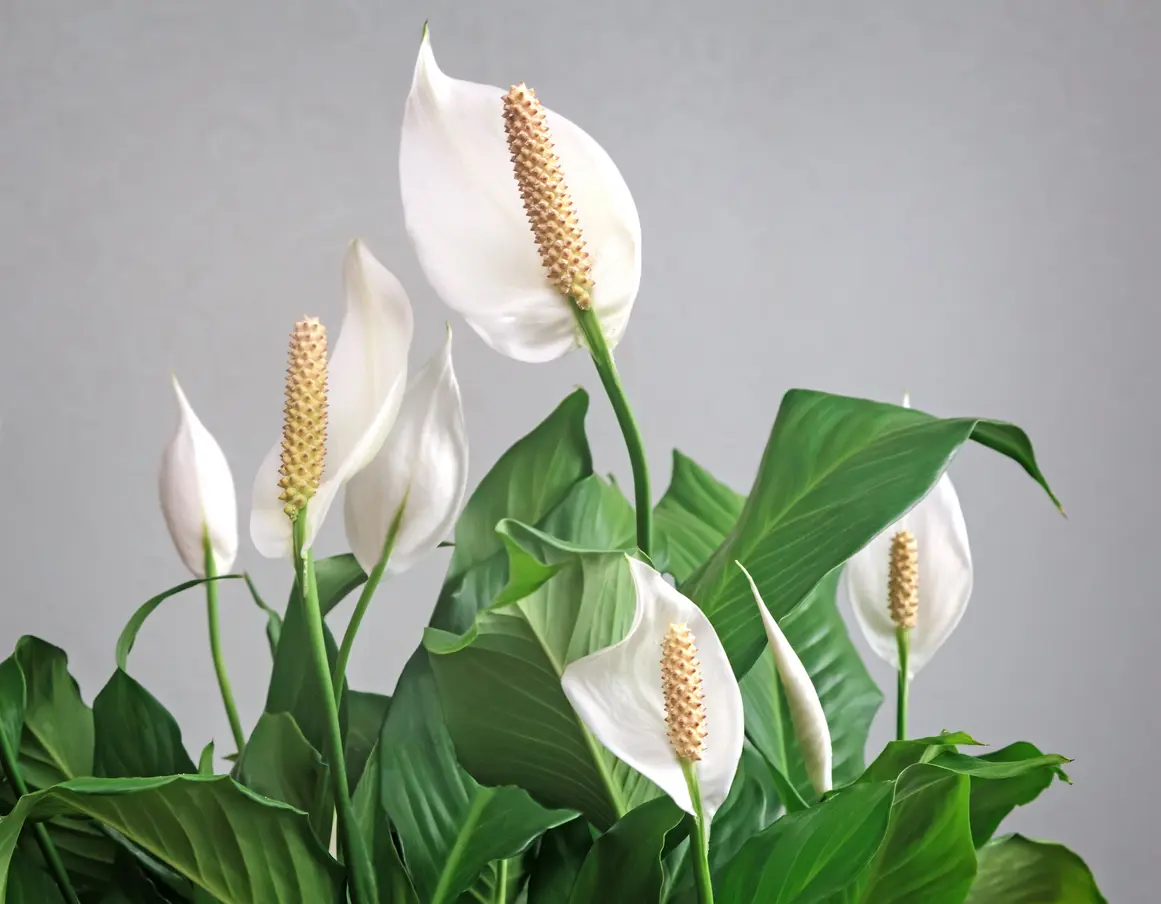
Poinsettias are popular flowering plants, especially during the holiday season, known for their red and green foliage. While often mistaken for flowers, these vibrant splashes of color are modified leaves, showcasing the plant's unique beauty.
Proper care is essential to keeping these plants healthy and thriving. This guide offers basic tips on watering, fertilizing, and overall cultivation to help individuals maintain beautiful and long-lasting poinsettias in their homes.
About Poinsettias

Few plants capture the festive spirit of the holiday season quite like the poinsettia. With its vibrant red bracts (modified leaves) radiating like starbursts, it brings a touch of cheer to homes and hearts around the world. But this stunning beauty is more than just a seasonal decoration; it boasts a rich history and fascinating features that deserve a closer look.
While we often mistake the showy bracts for flowers, the true blossoms are the tiny yellow clusters nestled in the center. These inconspicuous flowers may lack visual flamboyance, but they play a crucial role in attracting pollinators, ensuring the continuation of the Poinsettia lineage.
Essential Features:
- Native: Mexico and Central America
- Family: Euphorbiaceae (spurge family)
- Subtropical: Thrives in warm environments
- Sap: Milky, can be irritating to the skin (mildly toxic)
- Symbolism: Cheerfulness, hope, perseverance, resilience
- Flowers: Tiny yellow clusters found in the center of the bracts
- Growth habit: Can grow as shrubs or small trees (up to 10 feet in the wild)
- Bracts: Modified leaves, not flowers, responsible for the vibrant colors (red, pink, white, cream, variegated)
Watering Wisdom
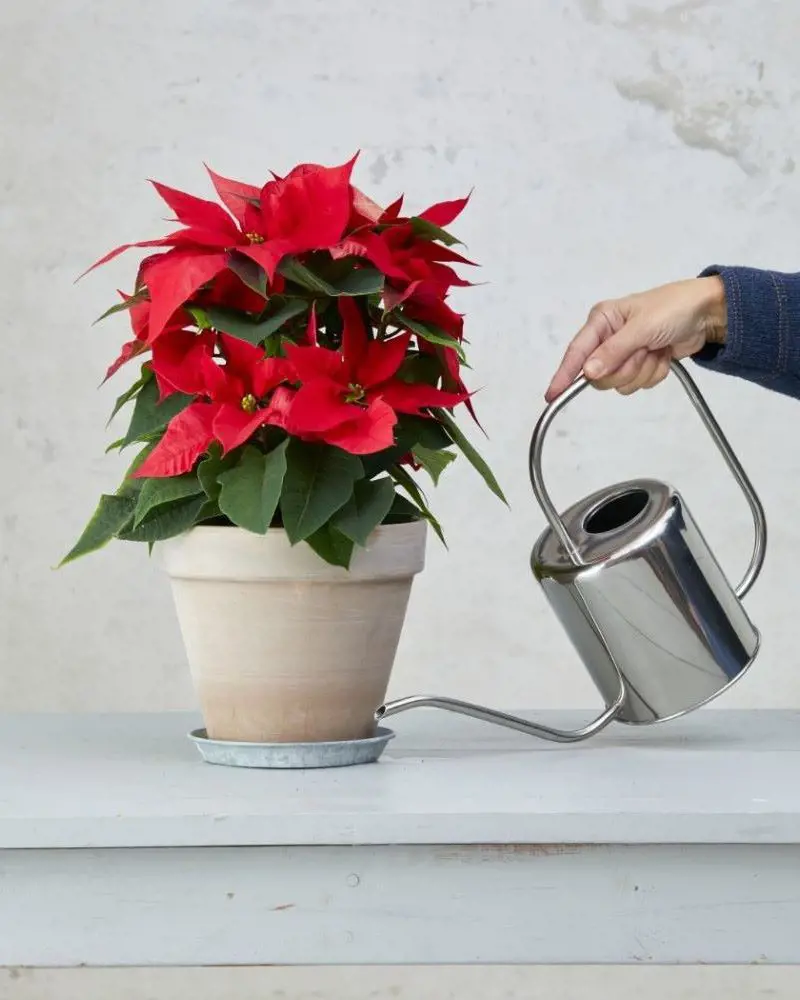
Care for a poinsettia plant is crucial for keeping it happy and healthy. Keeping your poinsettia vibrant and thriving beyond the holiday season can be a rewarding experience, transforming this festive decoration into a long-lasting houseplant.
The key to unlocking their long-lasting potential lies in mastering the art of watering.
Understanding Your Poinsettia's Thirst
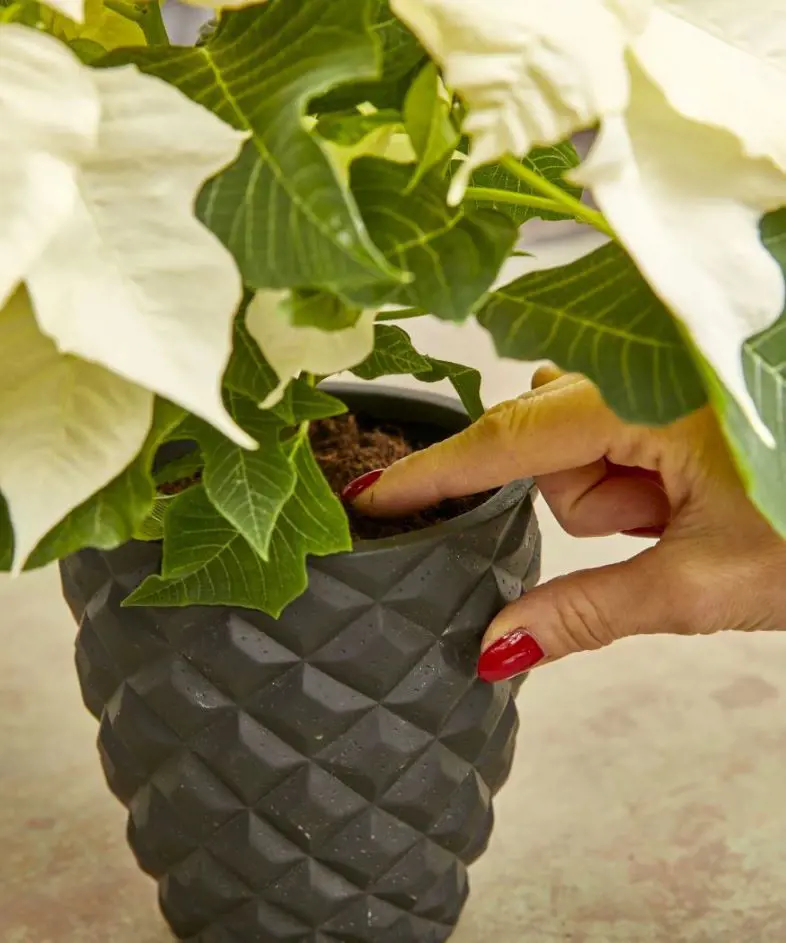
Poinsettias, like many tropical plants, prefer evenly moist soil but detest soggy roots. Finding the right balance is key. Overwatering is the most common mistake, leading to yellowing leaves, wilting, and root rot.
Here's how to understand your poinsettia's thirst:
- Finger-test: This is the simplest method. Stick your finger into the soil, about an inch deep. If it feels dry, it's time to water it. If it feels damp, hold off.
- Weight test: Gently pick up the pot. When it feels lightweight compared to its usual weight after watering, it's a good indicator that the soil is dry and needs replenishing.
- Visual clues: Wilting leaves or browning at the edges can be signs of underwatering. However, be careful not to mistake these for overwatering symptoms.
Seasonal Shifts and Watering Twists
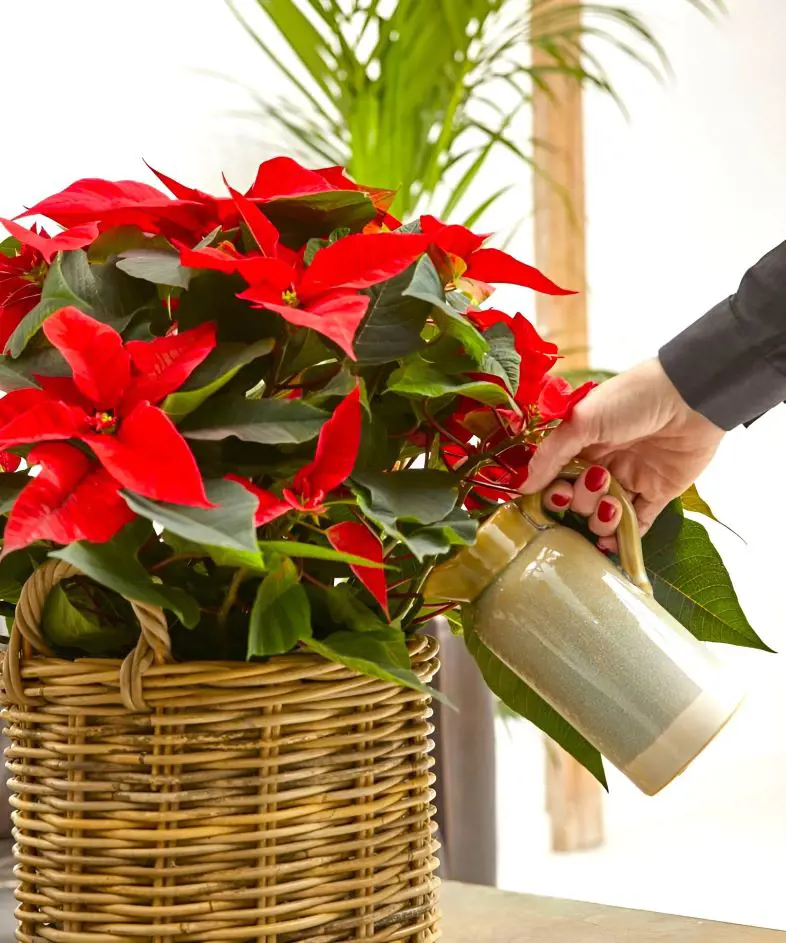
Poinsettias, like all living things, adjust their water needs with the changing seasons. During the warmer months, when evaporation is higher, they may require more frequent watering—roughly two to three times a week. Keep an eye on the soil and adjust accordingly.
As the temperatures dip and daylight hours shorten in the fall and winter, their water needs decrease. Once or twice a week may suffice during this period. Remember, it's better to err on the side of underwatering than overwatering during colder months.
Watering Techniques
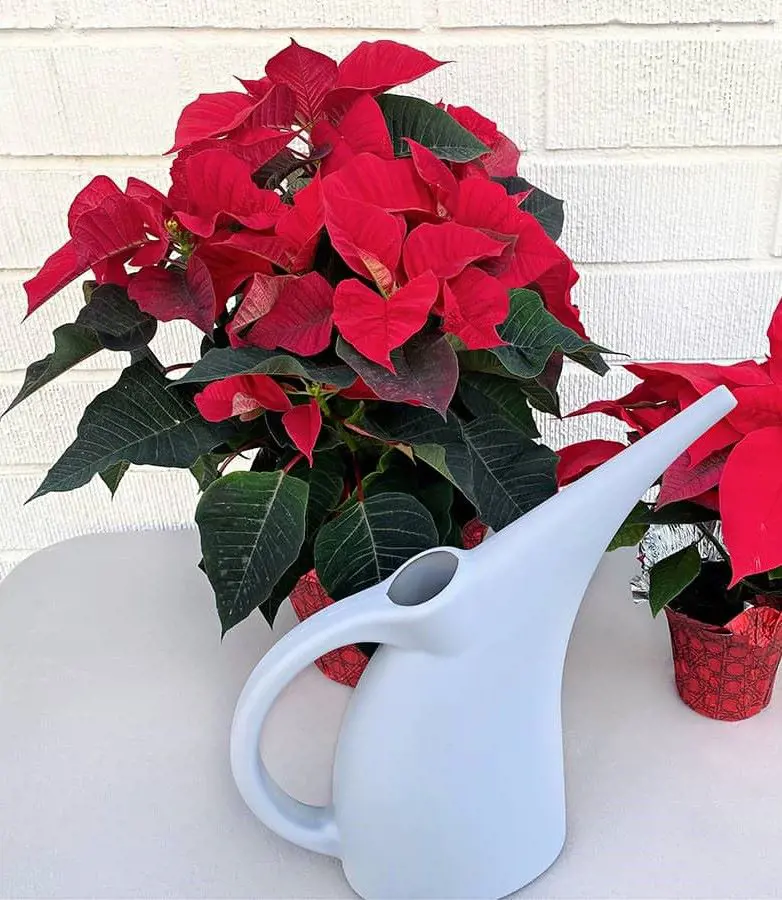
Once you've determined your poinsettia needs water, here's how to properly hydrate it:
- Thoroughness: Water the soil slowly and evenly until water drains freely from the drainage holes. Don't just pour water on top, as this can leave the roots dry underneath.
- Temperature: Use lukewarm water. Cold water can shock the roots and stunt growth.
- Frequency: Adjust your watering schedule based on the season and your environment. In warmer weather or when the soil dries faster, you'll need to water more often. In cooler weather or with slower soil drying, water less frequently.
- Soil choice: Use a well-draining potting mix. This allows excess water to drain away, preventing root rot.
- Avoid foliage: Try not to get water on the leaves, as this can encourage fungal diseases.
Bonus Tip
- Remove the foil: Many poinsettias come wrapped in decorative foil. Remove it as soon as you bring the plant home, as it can trap moisture and lead to root rot.
- Use a saucer: Place the pot on a saucer to catch any excess water. Empty the saucer regularly to prevent the roots from sitting in water.
- Group plants: Grouping poinsettias can help maintain humidity, reducing the need for frequent watering.
Fertilizing

While proper watering is the key to keeping your poinsettia hydrated, feeding it the right nutrients is crucial for its long-term health and vibrant beauty. This is where fertilization comes in, offering your plant the boost it needs to thrive beyond the festive season.
But fertilizing your poinsettia isn't just about dumping any fertilizer into the pot. It's a delicate dance of timing, type, and method, ensuring you provide the right nourishment without harming the plant.
When to Feed Your Poinsettia
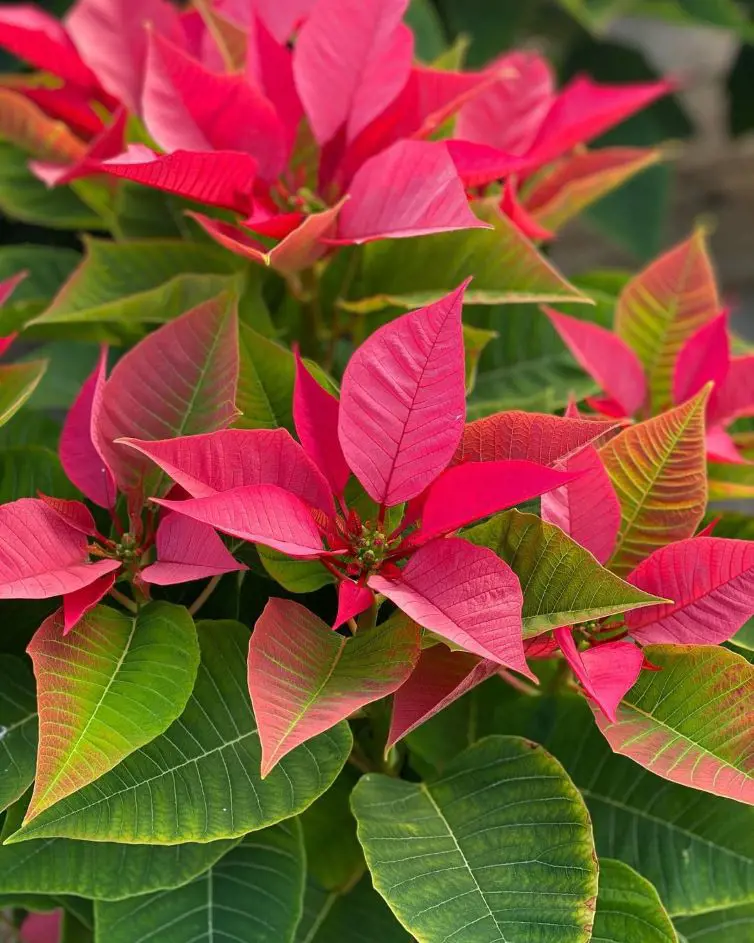
Care for a poinsettia also requires fertilizing the plant at the correct time. Here are some tips on when to fertilize them:
- Growth season: During the spring and summer months, when your poinsettia is actively growing new leaves and branches, it needs regular fertilization. Aim for once a month, using a balanced liquid fertilizer diluted to half strength.
- Rest and replenishment: In the fall and winter, your poinsettia's growth slows down significantly. This is the time to put the fertilizer on hold, allowing the plant to rest and conserve its energy.
- Reblooming dreams: If you're hoping for a second burst of blooms next year, start fertilizing again in late March or early April. This will give your poinsettia the necessary nutrients to develop new flower buds.
Choosing the Right Fuel
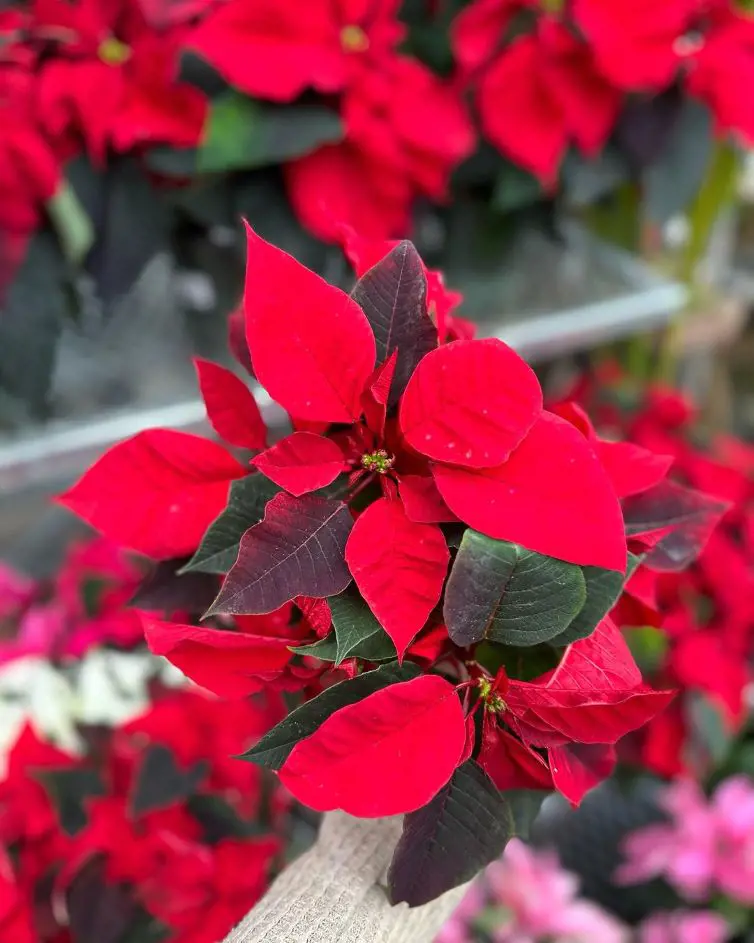
Care for poinsettia indoors must be done with the right kind of fertilizer. Knowing which fertilizer works best for the plant helps provide good support.
- Balanced is best: Opt for a balanced liquid fertilizer with an NPK ratio close to 10-10-10. This ensures your poinsettia receives a balanced mix of nitrogen (for foliage growth), phosphorus (for root development), and potassium (for overall plant health).
- Less is more: Remember, it's always better to under-fertilize than over-fertilize. Too much fertilizer can burn the roots and damage the plant. Diluting the fertilizer to half strength further minimizes the risk of overdoing it.
The Art of Application
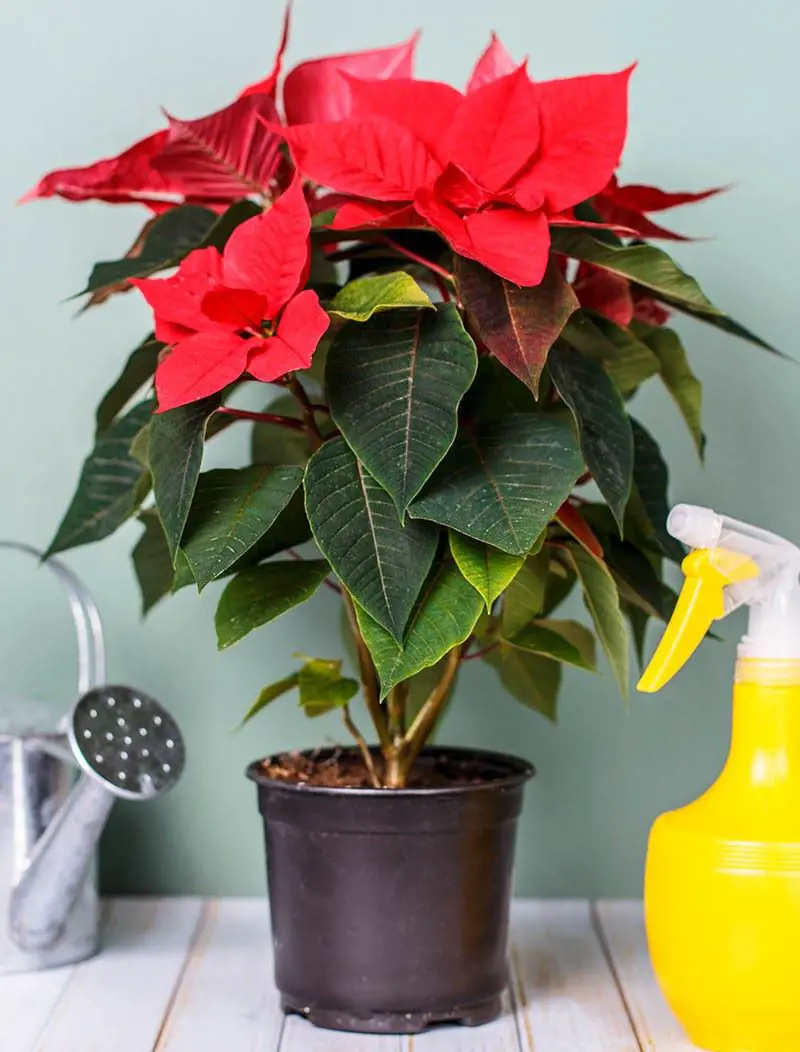
You can take care of poinsettia by understanding the art of application. Here is a detailed explanation:
- Water first: Before applying fertilizer, give your poinsettia a good soak with water. This will help prevent the fertilizer from burning the roots.
- Slow and steady: Don't just pour the fertilizer directly onto the soil. Instead, mix it with the water you're using to water the plant, ensuring it gets evenly distributed throughout the soil.
- Target the roots: Pour the fertilizer solution directly onto the soil around the base of the plant. Avoid getting it on the leaves or bracts, as it can cause discoloration or damage.
- Rinse and repeat: After fertilizing, rinse the pot and drainage tray to remove any excess fertilizer that might accumulate and harm the roots.
Warning Signs of Fertilizer Mishaps
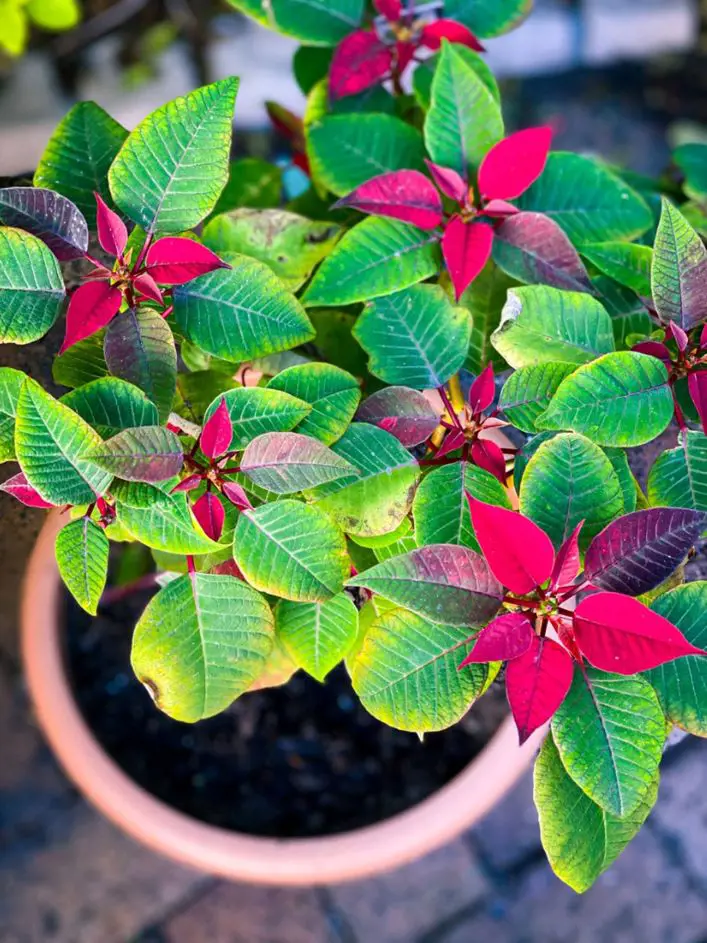
- Leaf burn: If you see yellowing or browning on the edges or tips of the leaves, it could be a sign of fertilizer burn. Stop fertilizing immediately, and flush the soil with plenty of water to dilute the fertilizer concentration.
- Stunted growth: If your poinsettia seems to be growing slowly or not putting out new leaves, it might not be getting enough nutrients. However, before increasing the fertilizer amount, rule out other potential causes, like insufficient light or underwatering.
Bonus Tips for Fertilizing Success
- Organic options: Consider using organic fertilizers, like compost tea, for a more natural approach to feeding your poinsettia.
- Know your soil: If you're using a potting mix that already contains fertilizer, adjust your fertilizer schedule accordingly to avoid overfeeding.
- Listen to your plant: Pay attention to your poinsettia's growth and adjust your fertilization schedule as needed. If it's thriving, you might not need to fertilize as often.
Growing Guide
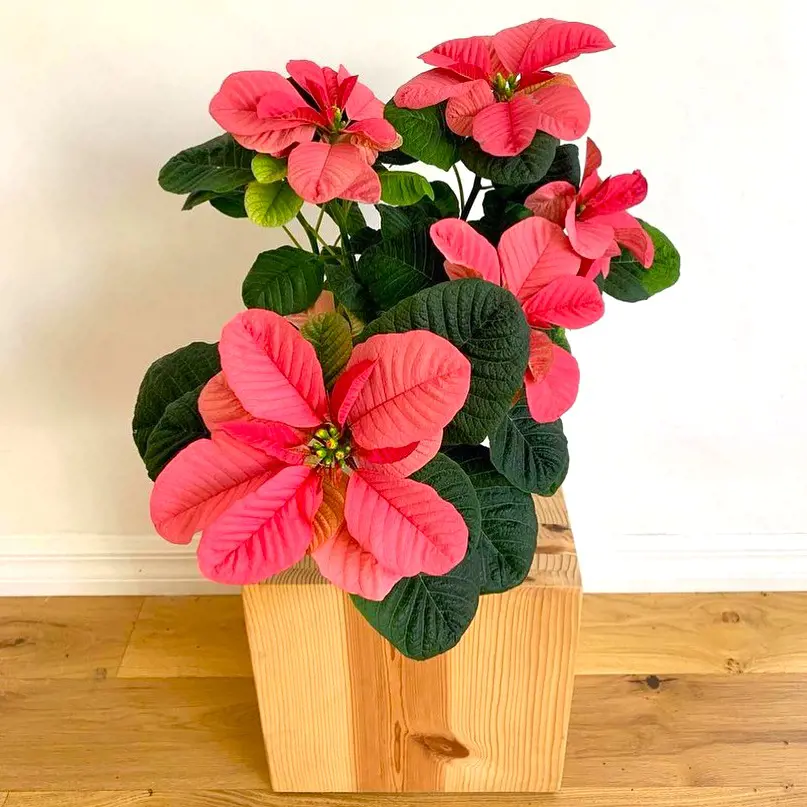
The dazzling red bracts of poinsettias captivate us during the holiday season, but their beauty can extend far beyond the last carol. With proper care and attention, these plants can thrive for months and even years, adding a touch of cheer to your home throughout the year.
But how do you make the transition from a temporary decoration to a flourishing houseplant? Here's a guide to growing poinsettias, ensuring their vibrant colors and stunning foliage grace your space for months to come.
Sunlight
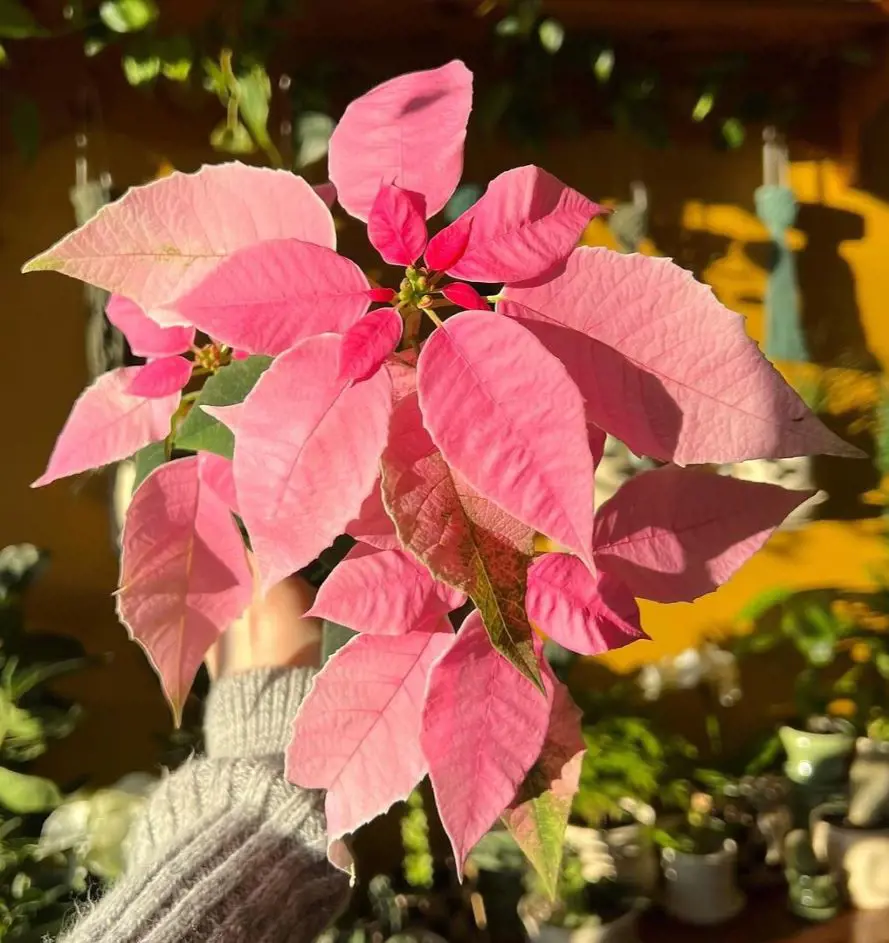
Poinsettias crave bright, indirect sunlight for at least 6 hours daily. Too much direct sun can scorch their leaves, while insufficient light leads to leggy growth.
A sunny window with sheer curtains or a spot near an east-facing window where they receive morning sun but are shaded from afternoon heat are ideal locations.
Temperature

Poinsettias thrive in comfortable temperatures between 65°F and 75°F. Avoid exposing them to cold drafts, heat vents, or sudden temperature changes, as these can stress the plant and lead to leaf drop.
Cold drafts are the enemy of poinsettias. Keep them away from windows and doors, especially during the colder months.
Watering
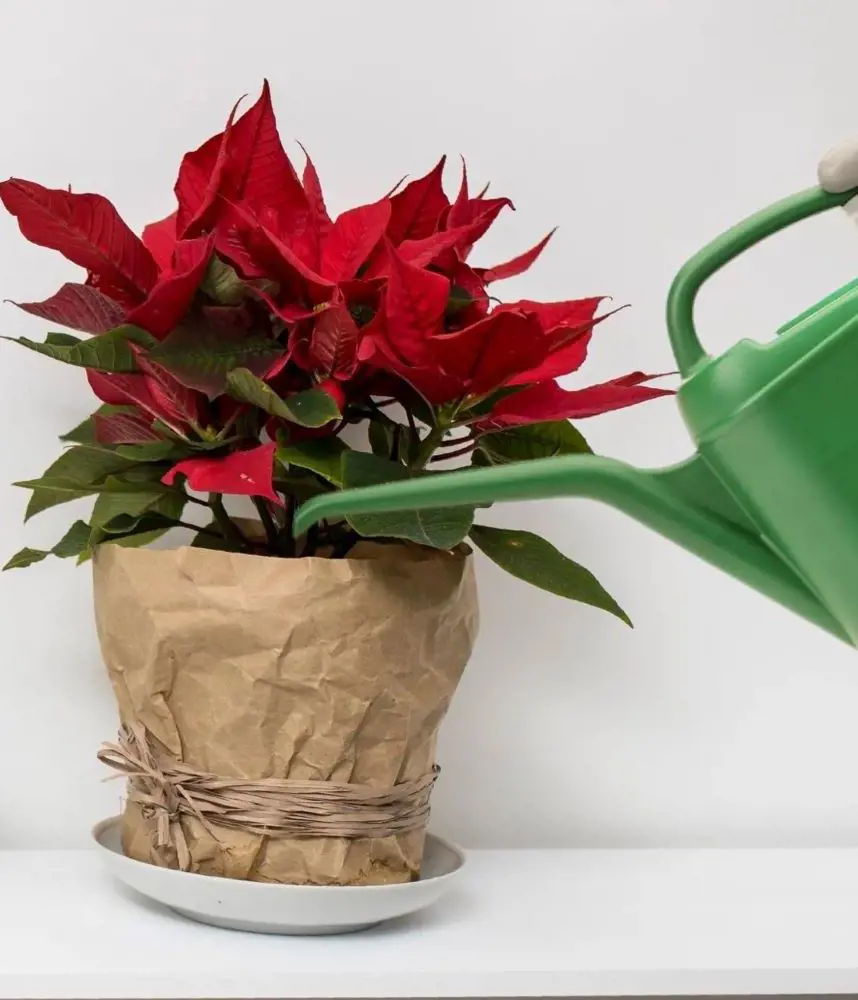
Poinsettias prefer moist soil but not soggy soil. Let the top inch of soil dry before watering to avoid overwatering, which can lead to root rot. Water slowly and evenly, allowing excess water to drain freely through the pot's drainage holes.
Stick your finger into the soil to gauge moisture levels. If it feels dry, give your poinsettia a drink. If it's still damp, hold off for a bit.
Pruning
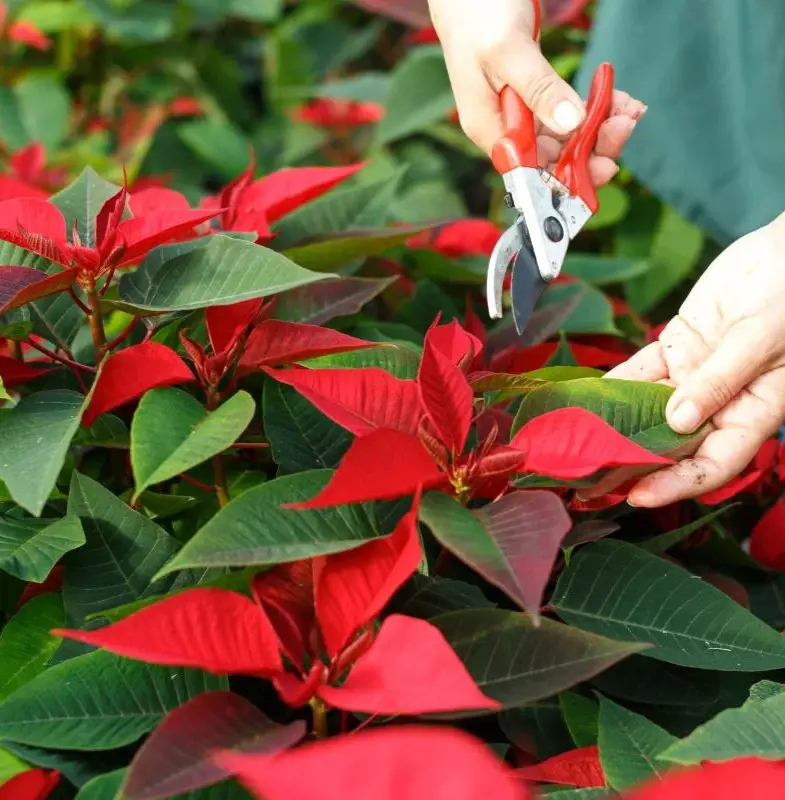
After the bracts fade, prune your poinsettia back by about half, making sure to leave at least two leaves on each stem. This encourages new growth and bushier foliage.
In early July, pinch back each stem by about one inch to encourage a stout, well-branched plant. Leave three to four leaves on each shoot.
Repotting for Growth
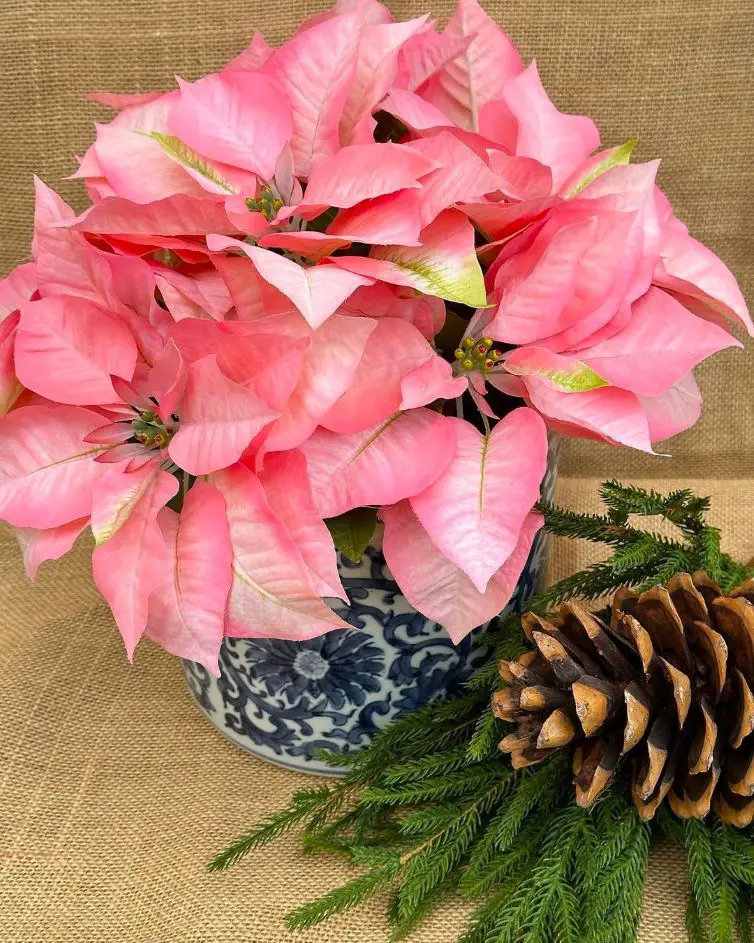
As your poinsettia grows, its roots might become cramped in its original pot. Repot it into a pot one size larger in the spring or summer, using a fresh potting mix with good drainage.
Be gentle with the roots, and water the newly potted plant thoroughly.
Pests and Diseases
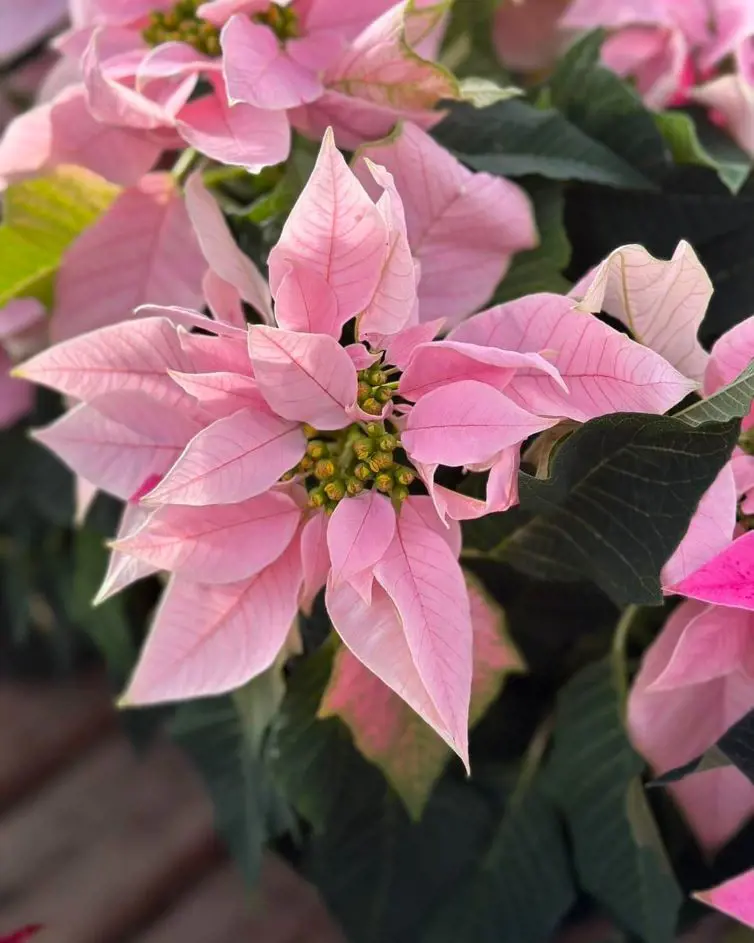
While relatively pest-resistant, poinsettias can be susceptible to mealybugs or whiteflies. If you spot any unwelcome guests, treat them with insecticidal soap.
Don't forget to check for signs of fungal diseases like leaf spots, which can be treated with fungicide if necessary.
Bonus Tips for Poinsettia Success:
- Mist the leaves occasionally, especially during the dry winter months, to increase humidity.
- Handle your poinsettia with care, as the sap can be irritating to the skin.
- Enjoy your beautiful poinsettia! With proper care, it can grace your home for months to come.
Poinsettia Flower Care
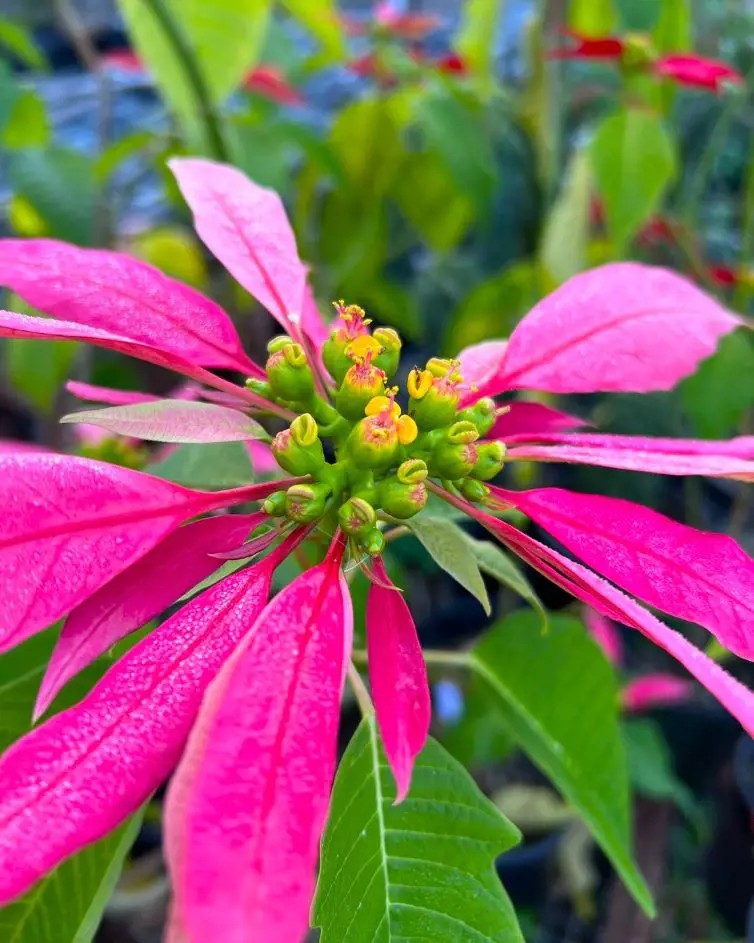
Unfortunately, the vibrant red bracts on poinsettias aren't flowers. They're modified leaves called bracts, and once they fade, they won't rebloom on the same plant for the current season.
However, with proper care and light manipulation, you can encourage your poinsettia to rebloom the following year, offering you another burst of festive cheer. Here's how:
Short Days, Big Blooms
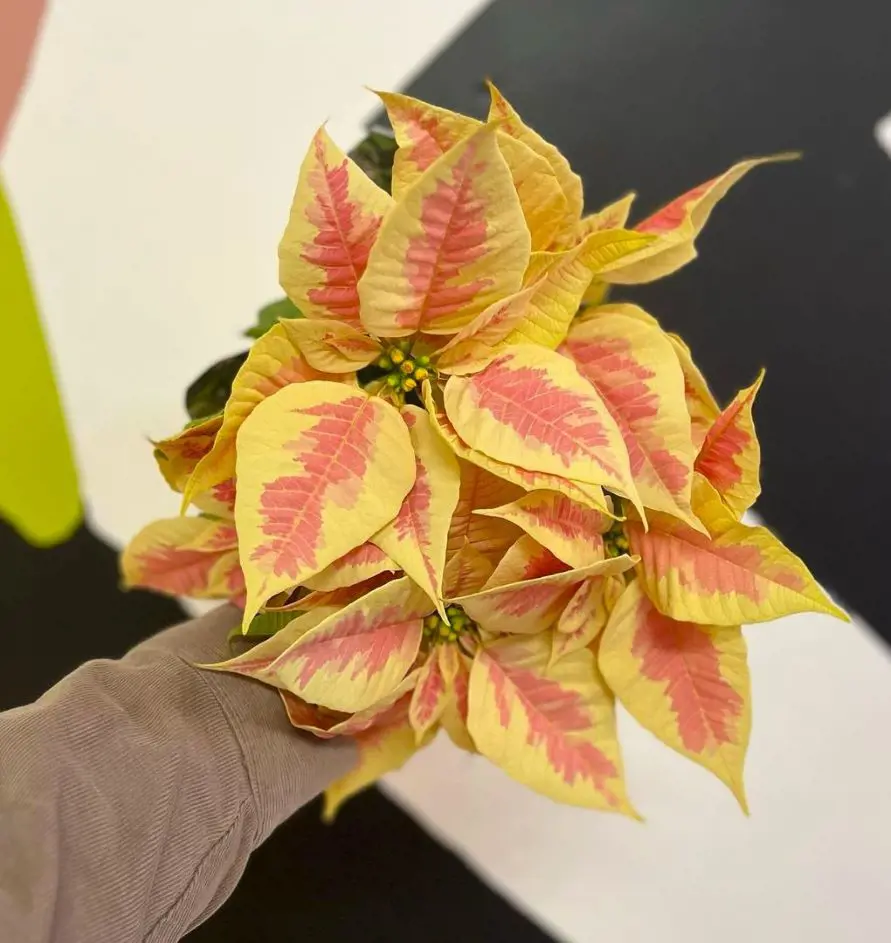
Poinsettias are short-day plants, meaning they require periods of uninterrupted darkness to initiate flower bud development. This mimics their natural flowering cycle in Mexico, where days shorten during the fall and winter.
To encourage reblooming, you'll need to provide your poinsettia with at least 14–16 hours of complete darkness every day for 6–8 weeks, starting in late September or early October.
Creating Your Dark Zone
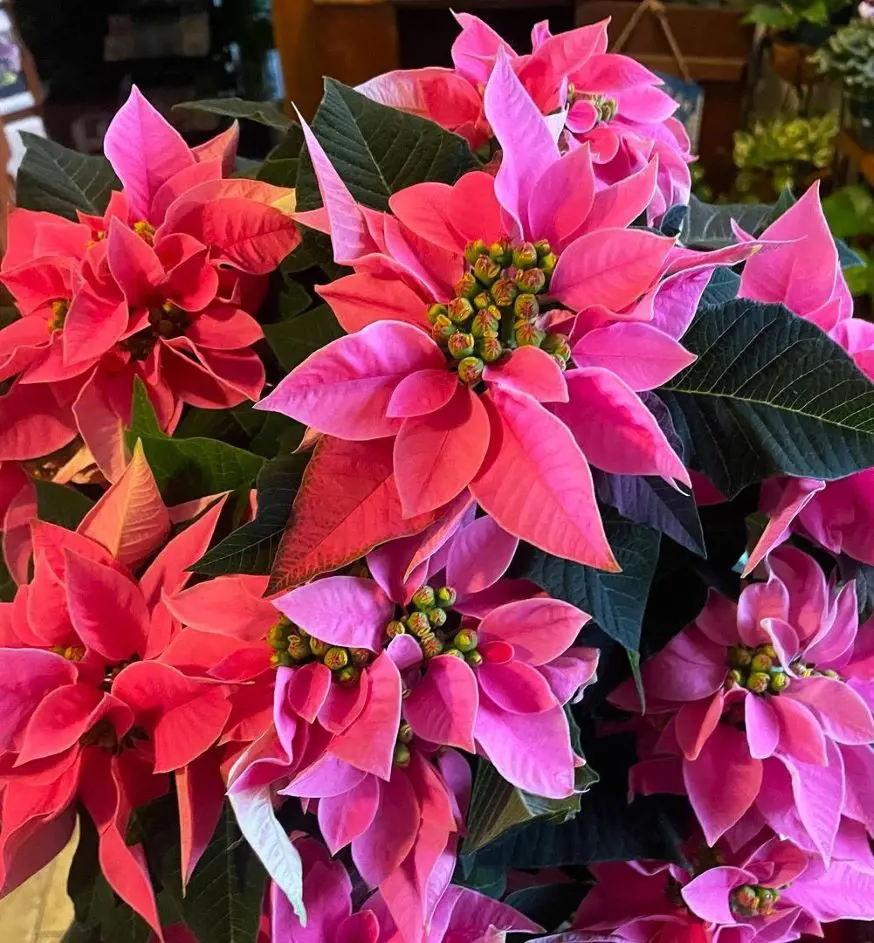
- Dedicated room: If you have a spare room you can use, move your poinsettia there during its "dark period." Make sure the room is completely dark, without any light leaks from windows, doors, or electronics.
- Box it up: Place your poinsettia in a large, opaque box and cover it with a dark cloth during the nighttime hours. Bring it out into bright, indirect sunlight during the day.
- Black curtains: If dedicated spaces aren't available, consider hanging thick black curtains around your poinsettia at night to block out any ambient light.
Post-Darkness Care
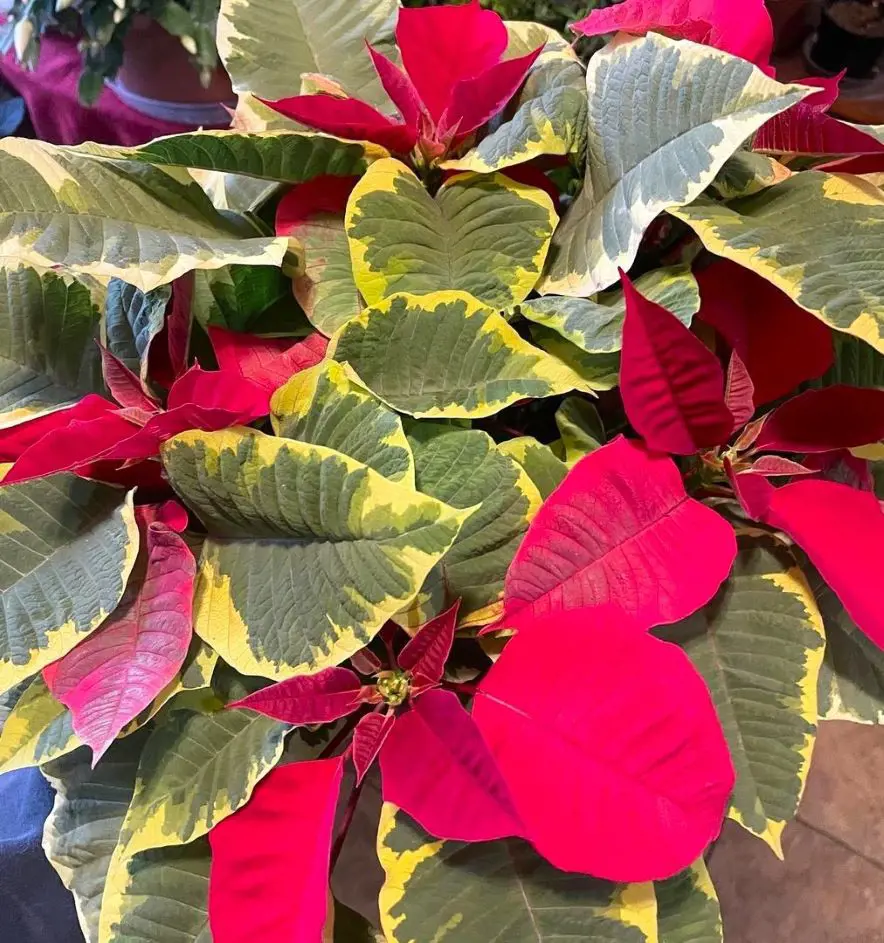
After the 6–8 weeks of darkness, return your poinsettia to its normal spot with bright, indirect sunlight. Continue with regular care, including watering, fertilizing, and pruning.
With proper post-darkness care and maintenance, your poinsettia should start developing flower buds by December or January, eventually showcasing those festive red bracts once again.
Bonus Tips for Reblooming Success
- Temperature: Maintain comfortable temperatures between 65°F and 75°F during the reblooming period. Avoid sudden temperature fluctuations.
- Fertilize: Stop fertilizing while your poinsettia is in darkness, and resume with a balanced liquid fertilizer at half strength once you see new growth.
- Patience: Reblooming might not happen overnight. It can take several weeks for flower buds to develop and open. So, be patient and enjoy the journey.
Popular Types of Poinsettia
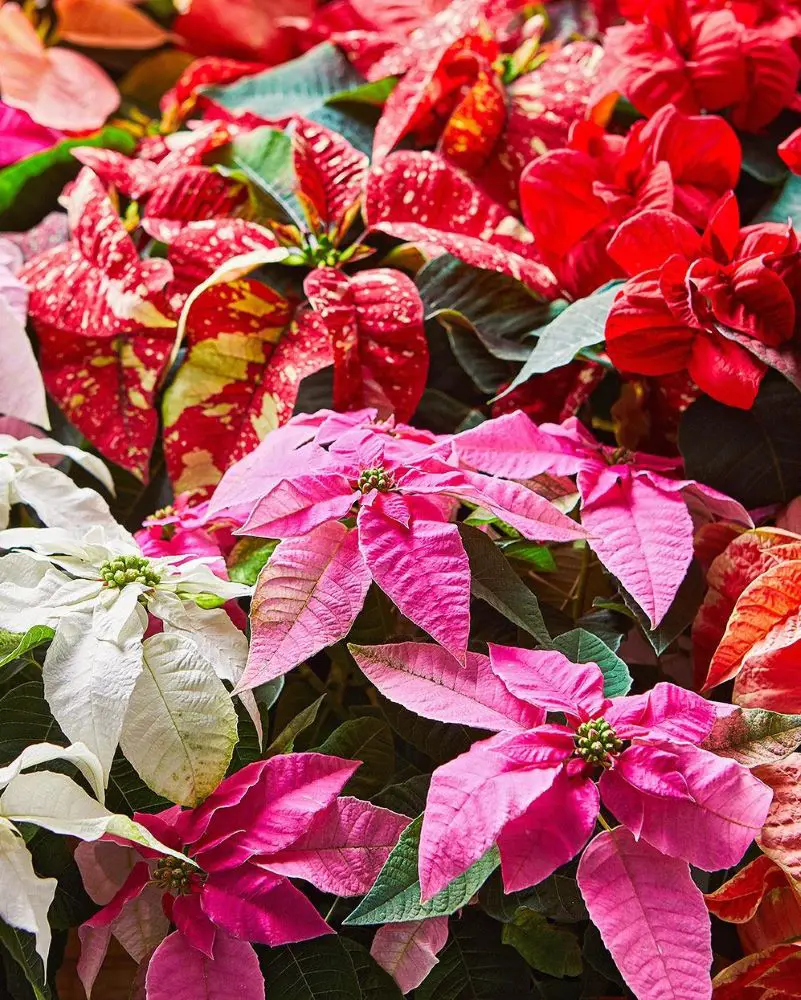
Poinsettias (Euphorbia pulcherrima) come in various types, each distinguished by unique characteristics such as color variations, growth habits, and leaf shapes.
While the traditional red poinsettia is the most well-known, hybridization efforts have resulted in a range of popular types that add diversity to this iconic holiday plant.
White Poinsettias
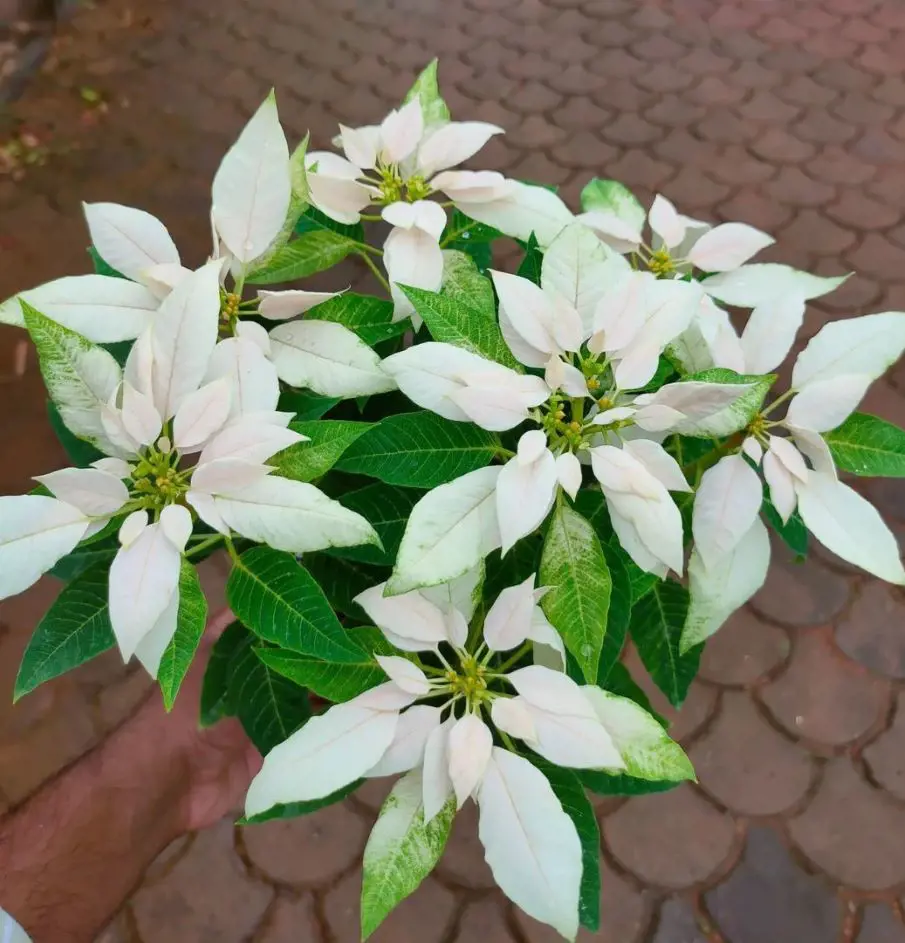
White poinsettias offer an elegant and sophisticated alternative to the traditional red. The bracts of these varieties are a pristine white, creating a serene and winter-appropriate aesthetic.
These poinsettias are becoming increasingly popular for both holiday decorations and year-round enjoyment, offering a versatile option for various occasions.
Pink Poinsettias
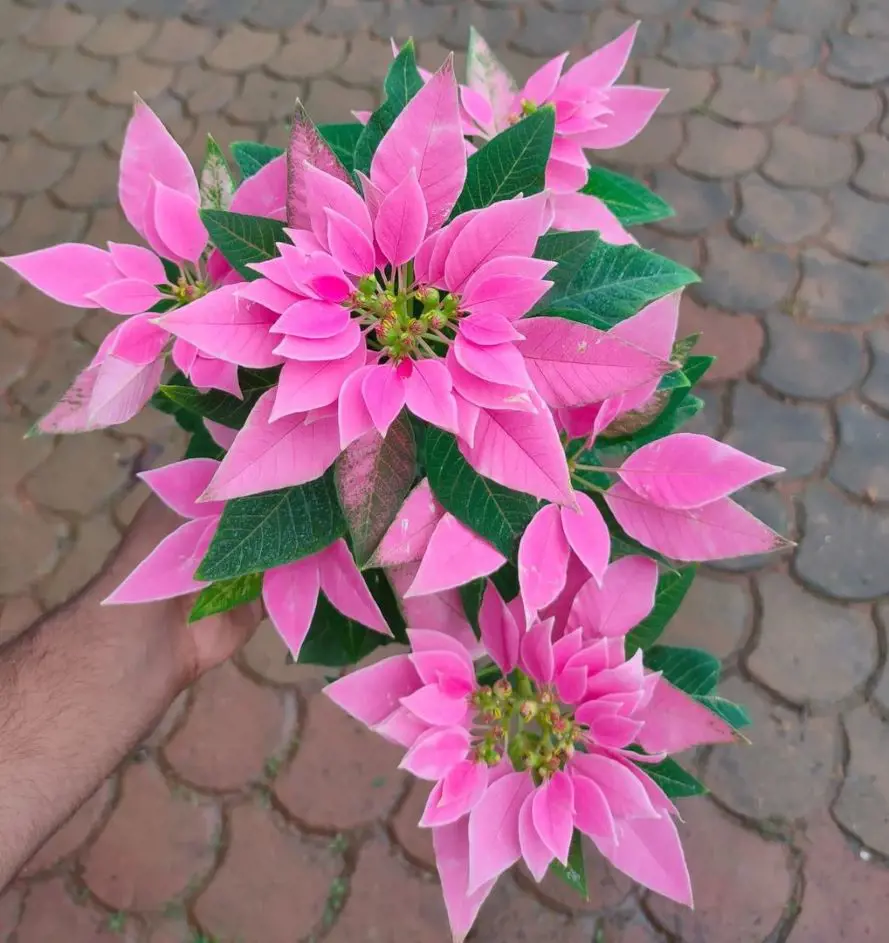
Pink poinsettias bring a soft and delicate touch to the holiday palette. These varieties showcase shades of pink in their bracts, ranging from pale blush to deeper rose tones.
The subtle and charming appearance of pink poinsettias makes them an attractive choice for those seeking a departure from the more common red and white varieties.
Marbled and Speckled Poinsettias

For a touch of uniqueness, marbled and speckled poinsettias feature bracts with interesting patterns and variegations. These varieties may have marbled shades of red, white, or pink, adding a visual flair to the traditional solid-color poinsettias.
The intricate patterns make them stand out and contribute to a more artistic and decorative display.
Blue Poinsettias

The vibrant blue poinsettia you saw might have surprised you, as naturally grown poinsettias don't come in that shade. The blue ones you encounter are most likely dyed, either after being cut or while still growing in greenhouses.
White poinsettias are commonly chosen for dyeing due to their ability to absorb the color well. They're dipped in special solutions containing blue dye, often incorporating metallic shades for extra sparkle.






